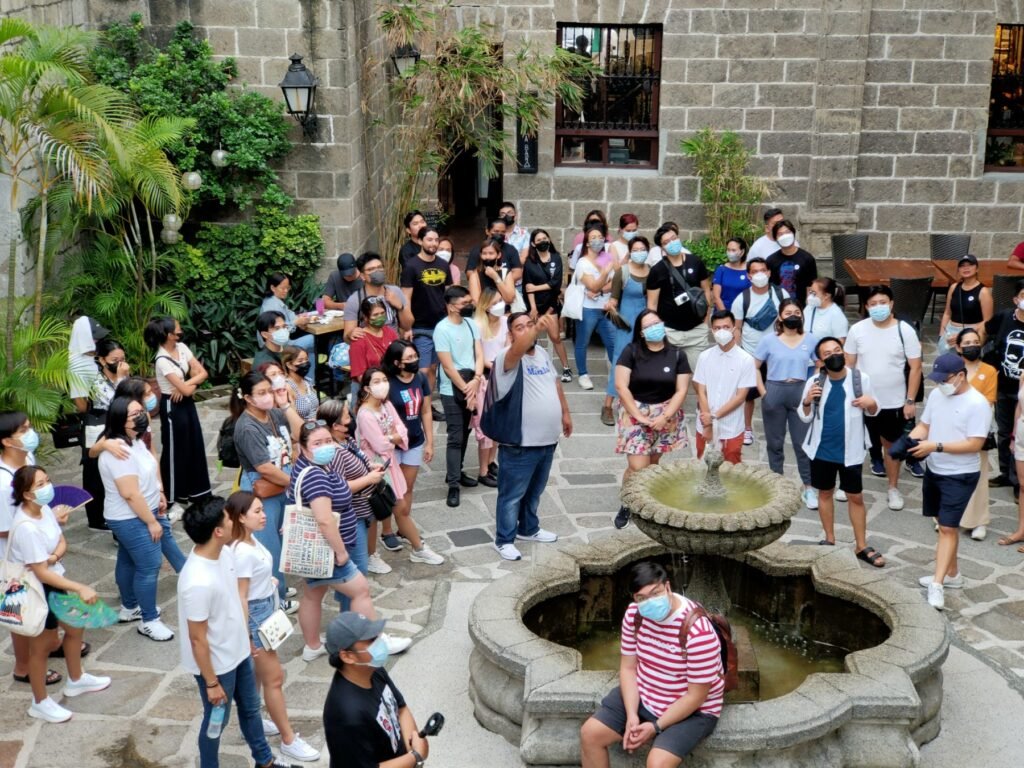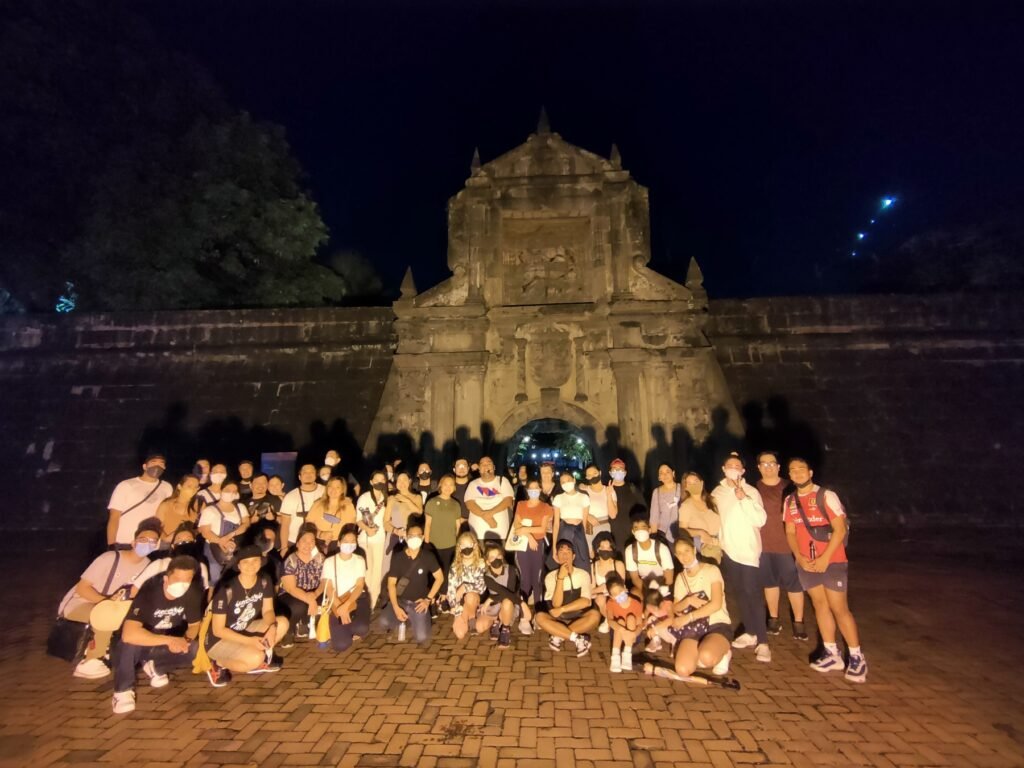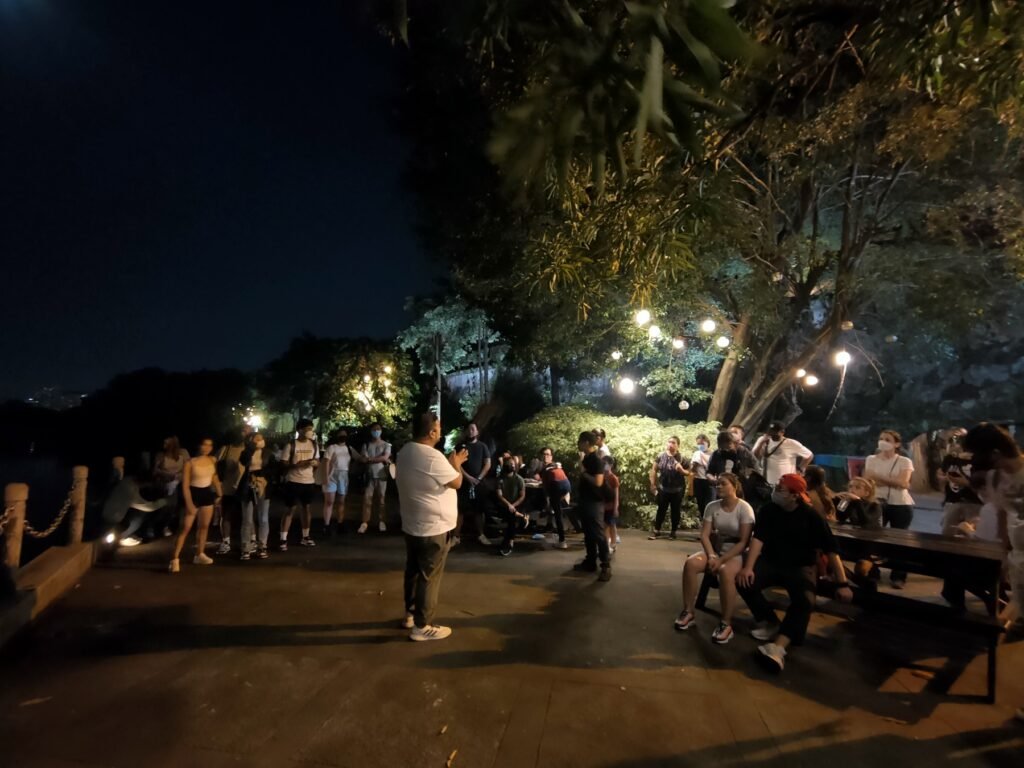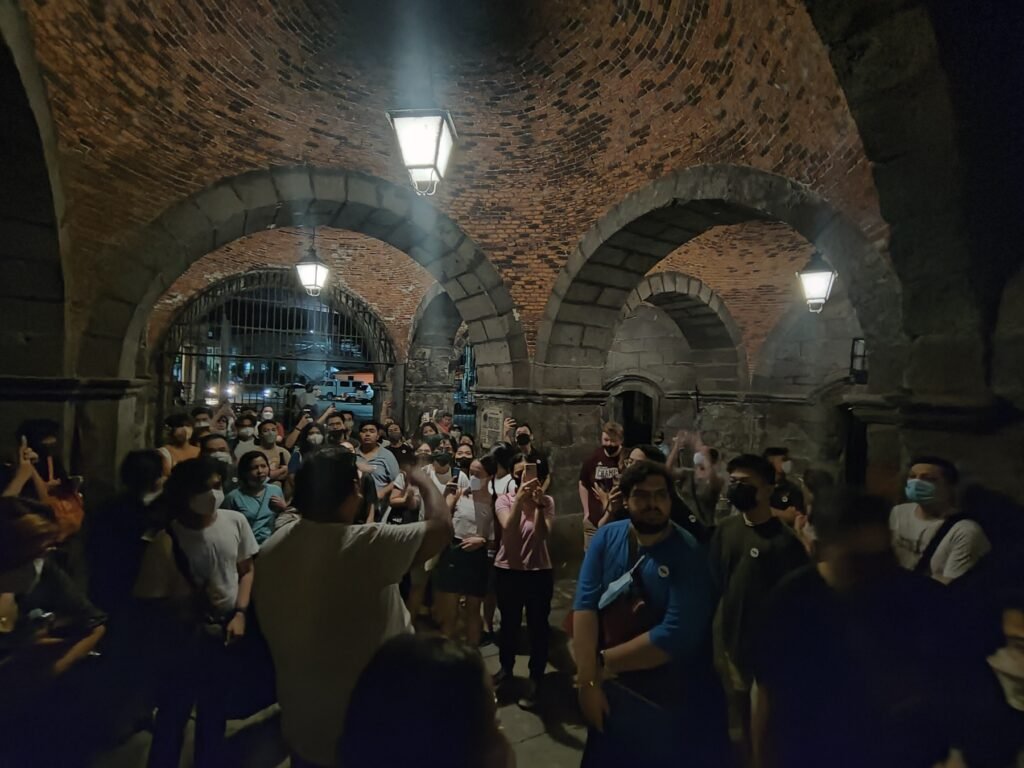Introduction and Interview Gabrielle de la Cruz
Images WanderManila and Benjamin Canapi
The formula of WanderManila is simple: come for the thrill, stay for the education. Since 2019, the guided tour group has been hosting “dark tours” within the city of Manila, where they visit historical spaces and places that are reputed to be haunted. What elevates the tour from your usual Halloween offering is that participants are not limited to being secondhand listeners of ghost stories; they are actually able to explore structures and sites where such stories reputedly took place.
WanderManila head tour guide Benjamin Canapi underscores that they specifically look for locations that witnessed tragic and terrifying moments in Philippine history and not necessarily those with ghost sightings. Their objective is to provide a more in-depth discussion about spaces and places that we know to exist, and that there is more to Manila than we know now.
Days before the 31st of October, Canapi elaborates on the journey of their dark tours, the truth about discovering the horrors of history, and teases us in on some of Ermita’s secrets.
Below is our conversation:


Hi Benjamin! I saw in your posts that you’re doing an Ermita tour this coming Halloween. Can you tell us why you decided to do so? Is the tour fully booked at the moment?
Hello Gabbie. Yes, the tour is fully booked. We’re doing Ermita this year because I wanted a special, unique tour for the Halloween season, now that “One Night…” is a regular offering. Most of the destinations here were covered during the “One Night in Manila” online tour last year, and the destinations were close enough to each other to make the tour feasible.
Take us a few steps back. Can you tell us more about WanderManila and how it started? When did the dark tours begin and what were the inspirations behind them?
WanderManila officially started in November 2018, to augment the earnings of our newly opened Intramuros store Puesto (closed in 2020). WanderManila was in the business of doing historical tours, using the heritage structures of Manila as our backdrop.
The first ever One Night in Intramuros tour actually happened by accident. Back in October 2019, Puesto was going to host a party for the fanbase of the Netflix horror animation Trese. I made the fortuitous mistake of announcing that WanderManila was doing a private Halloween tour for the Trese fanbase. The post went viral, with people stating that they wanted to go as well. We quickly put up a paywall to cull the crowd but we still ended up with around 70 people.
Because of the resounding success of that tour, I knew I had to stage it again the next Halloween season. However, COVID-19 happened, so I had to take the tour online.


You mentioned that the “One Night…” offerings are now regular. How did this happen? Do you follow specific criteria or calendars for conducting heritage tours?
In all honesty, I didn’t include the “One Night…” tour as part of our offerings when WanderManila had the chance to tour again. However, when we reopened for business back in November 2021, most of the inquiries were for the “One Night…” tour. We honestly didn’t want to turn down revenue, so we ran with it.
The demand kept increasing until we were compelled to stage public “One Night…” tours in February of this year. We would run out of slots within hours back in February and March. We could only offer limited slots back then, but with people really clamoring to join, the numbers per tour started to increase per month. Nowadays, we’d stage two public tours per month, and we sell out both dates within days. It’s been crazy.
Of course, WanderManila has other tours and events on our docket. We try to stage special-themed tours when there are special occasions.


Glad to hear that you are able to conduct live tours again and that they sell out fast. What would you say are the notable differences between live, walking tours and virtual ones in impact? Personally, which do you prefer hosting and why?
Going live is far better! I love love love feeding off the energy of the crowd, I love hearing their reactions and playing off their comments. The presence of a crowd makes me a better tour guide. In return, I am able to give a more impactful and memorable in-person experience.
How do you prepare for live tours? What safety precautions do you usually have in place? Is there a usual crowd limit?
For public tours, we limit the number to 50 participants, already an insane number as it is. Any more than that, the crowd would be too big and slow, and the participants would be compelled to stick to other people too much.
Wearing masks and social distancing is still heavily encouraged.
Personally, I try to keep myself healthy and in shape, which is challenging for someone my age. I also try to conserve my voice as much as possible.


Walk us through your entire process prior to a tour. How do you thread together an itinerary? How do you source and verify your stories?
When we’re developing a tour, we first collate the possible destinations in the area, then we try to match them with specific moments in history. Intramuros lends itself well for discussions about the history of Manila from Pre-Colonial times to the Philippine Revolution, while the heritage corridor of Ermita up to Escolta is more of an American Era thing. After that, it’s a matter of finding the best walking route to ensure the best possible experience for your guests. Even then, there’s a lot of fine-tuning between tours, based on feedback and observations.
As for sourcing stories, I look for both physical and online material. Sites like Wikipedia and Filipiknow are good enough to get you started and build a framework, but they’re not sufficient. Backing all that up with more informative and comprehensive sources such as history books, historical records, and the like is very crucial. Finding a key line of information has literally compelled me to make changes in my spiels many times.


Are there any site-specific stories or discoveries that people should watch out for in One Night in Ermita?
Who is the Black Lady of the Metropolitan Theater? Why is Manila City Hall shaped like a coffin? What was the massacre that Arroceros Forest Park witnessed outside the Battle of Manila? Was Luneta a killing field back in the day? These are some of the questions that One Night in Ermita will provide thrilling answers to.
Aside from the thrill and excitement they bring, what would you say is the greatest advantage of dark tours in educating people about heritage?
Since dark tours focus on the more macabre and violent aspects of our history, these also highlight the lessons you can learn from these events.
What about the disadvantages? Wouldn’t highlighting haunted historical sites pose a negative effect on how people view heritage?
Goodness, apparently not. The local market is fascinated with horror stories and other media. If anything, our tours should be proof that there is a clamor for these kinds of experiences.
And look, if it did happen in our history, it’s fair game. We don’t invent stories, we look for the best real ones.


Are there any interesting anecdotes and soundbites from people who have joined the past WanderManila dark tours?
For all intents and purposes, the “One Night…” tours have been well received, and it seems that people enjoy their experience with us. One moment that really got to me happened during our first public tour back in February. A mother came with her two young daughters. After the tour was done, she came to me and gave me a tip. When I tried to refuse the tip (As far as I’m concerned, she already paid for my services), she told me I started something inside her daughters, and that she was absolutely grateful. That really shook me to my core.
At the end of the day, touring is a form of education. When we do our jobs right, touring becomes an educational experience. When we do what we’re supposed to do, people learn things and ultimately become better.


Will you be visiting places outside the metro for future episodes? Are you also open to exploring other methods to meet WanderManila’s goals?
WanderManila will be sticking to tours within the metro. We are actively exploring other methods to get people to come and explore Manila. Whether it’s more experiential activities, collaborations with other groups and institutions, or creating new products, the exploration never ends.
Lastly, if there’s anything you want people to take away from this coming One Night in Ermita tour, what is it?
History has so many cautionary tales. We should learn from them. •
Gabrielle de la Cruz started writing about architecture and design in 2019. She previously wrote for BluPrint magazine and was trained under the leadership of then editor-in-chief Judith Torres and previous creative director Patrick Kasingsing. Read more of her work here and follow her on Instagram @gabbie.delacruz.

